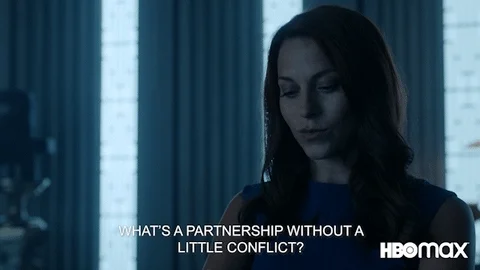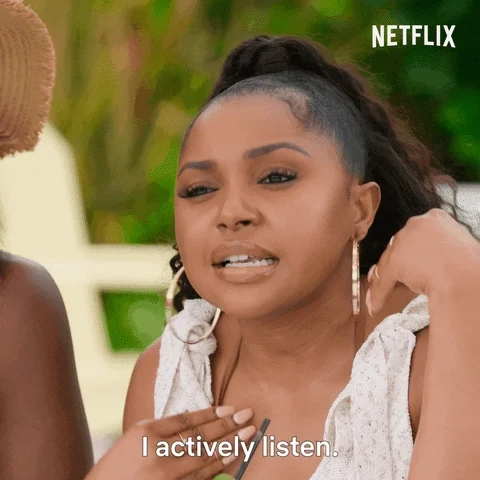Have you ever had disagreements with your partner about money matters? Or clashed with your roommates over household chores? Maybe you've had conflicts with colleagues due to differing work styles?

By using interpersonal communication strategies, you can enhance your understanding about other people and find solutions to conflicts.
What Is Interpersonal Communication?
Interpersonal communication is the way two or more people exchange information with each other. It can be:
Verbal like using words to share information, thoughts, and feelings
 Photo by sporlab on Unsplash
Photo by sporlab on UnsplashNon-verbal like facial expressions, body movements, posture, and gestures
 Photo by Chinh Le Duc on Unsplash
Photo by Chinh Le Duc on UnsplashWhen encountering conflicts in your life, applying interpersonal communication strategies can be helpful in achieving effective resolution.
Tip #1: Practice Active Listening
To resolve conflicts, you should purposefully listen, with the aim to comprehend the message and retain the information that the other person has to share.


Don’t interrupt.
Hold your questions or thoughts until the person you're talking to has finished speaking. Interrupting can make it seem like their thoughts are not important and worsen the disagreement.

Allow space for silence.
If your mind is focused on thinking about the next question to ask, you may not fully grasp the thoughts conveyed by the other person.

Summarize what the person shares.
It shows that you're trying to understand their perspective. Keep a neutral and objective tone so you don't sound defensive. You could say:
"If I understand correctly, you mentioned that..."
"From what I gathered, your main concerns are..."
Tip #2: Pay Attention To Non-Verbal Communication
In a face-to-face situation, especially when emotions are intense, the extra information communicated through non-verbal cues can decide the outcome of the discussion.


Identify what the non-verbal cues mean.
Nonverbal communication can translate different meanings. For example, nodding, tilting the head, and open body postures can show engagement, while the body tilting away, or crossed arms and legs can show disengagement.

Observe and adjust.
Observe the non-verbal cues of the other person and tailor the way you respond. If you notice that the other person is becoming agitated, you can adjust your tone to help create a calmer environment.

Be Aware Of Your Own Emotions
You might display your heightened emotions in your non-verbal cues during a tense exchange. Recognize your personal physical responses during a dispute and tune them:
Are you looking directly at the person to show your interest?
Are you crossing your arms across your chest?
Tip #3: Balance Empathy With Assertiveness
By combining empathy and assertiveness, you can create a balanced approach to conflict resolution that promotes understanding and the exploration of mutually beneficial solutions.


Empathy comes first.
In a conflict, people tend to focus on their own viewpoint. If you demonstrate empathy first, there is a higher chance that the other person will reciprocate.
Be assertive but calm.
When you state your point of view:

Use phrases like "I think" or "I feel".
Use facts and evidence.

Don't be aggressive.
Don't blame, criticize or accuse.
Collaborate using "and".

Replace "but" with "and" when expressing your position. It gives equal importance to the other person's viewpoints and shows that you want to work together.
Meet Amanda
During Amanda's first month as a project lead, she senses that one of her team members, Blake doesn't seem to enjoy working with her. Sure enough, she receives an email from Blake, where he points out some disagreements with the project direction.

Amanda meets Blake and he begins expressing his views. However, it's clear that Blake has incorrect information due to his absence from several group meetings.
What should Amanda do?
A: Stop Blake, tell him he’s right, and explain what has already been done to address the points.
B: Listen silently while crossing her arms with her fist clenched. Think about questions to ask him.
C: Consider why Blake might've missed the meetings and ask him how she could better communicate information to him.
D: Acknowledge Blake’s points and tell him there wouldn't be this conflict if he had attended the meetings.
Quiz
What should Amanda do to resolve the conflict?
Take Action
Resolving conflicts can be a complex process that requires taking into account the different personalities of the people involved. However, using interpersonal communication strategies can be a first step towards better understanding.

Your feedback matters to us.
This Byte helped me better understand the topic.
